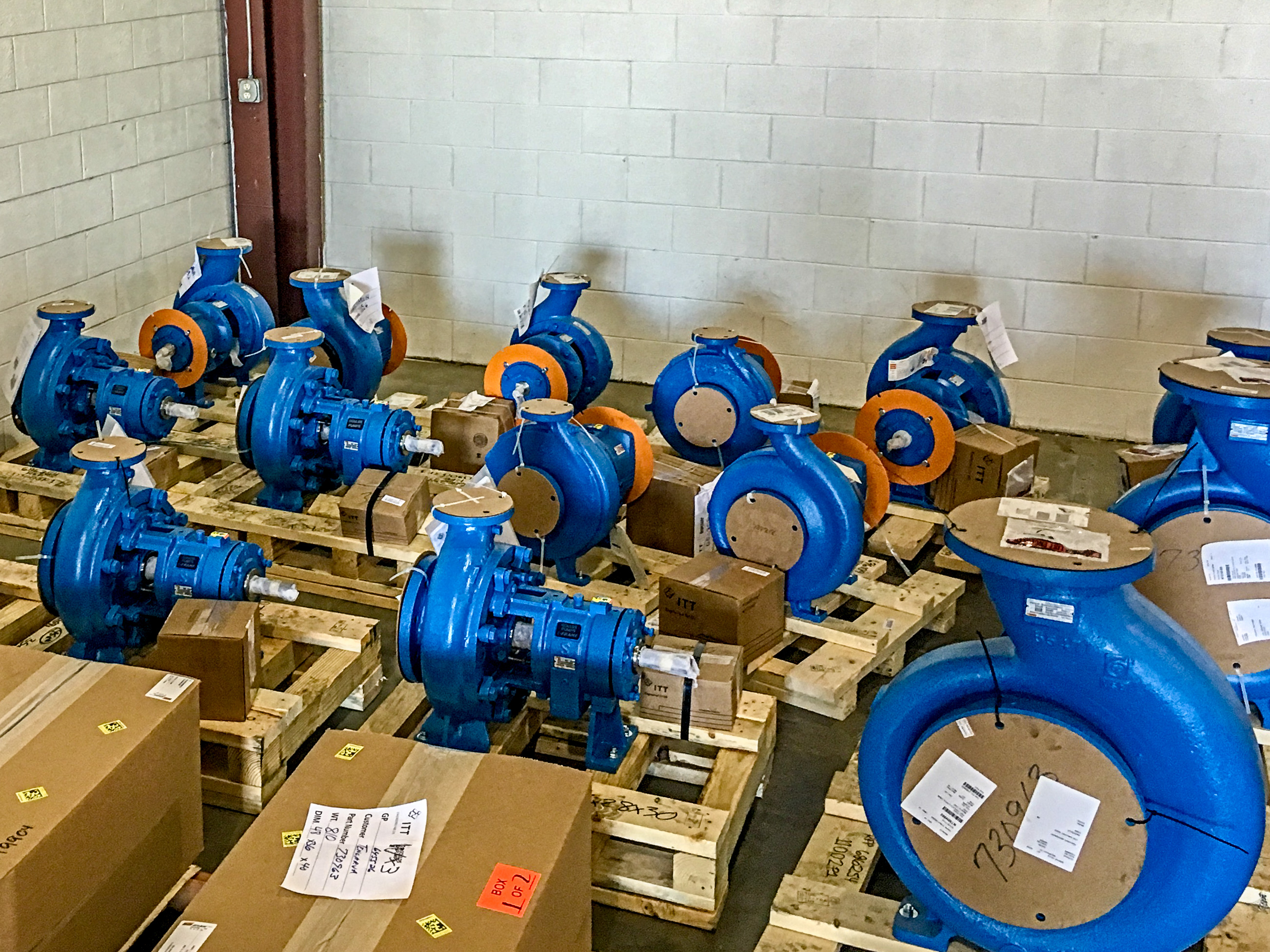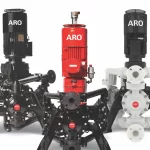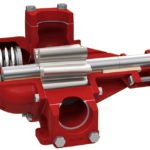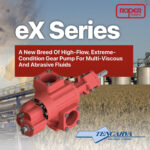
Aug 2, 2016 | Goulds Pumps
Goulds 3196 Pumps ready to ship. Headed for Tennessee!
Goulds 3196 Pump Tips
Oil requirements based on temperature.
For the majority of operating conditions, bearing temperatures run between 49°C | 120°F and 82°C | 180°F, and you can use an oil of ISO viscosity grade 68 at 38°C | 100°F. If temperatures exceed 82°C | 180°F, refer to the table for temperature requirements.
Temperature Oil requirement
Bearing temperatures exceed 82°C | 180°F Use ISO viscosity grade 100 with bearing-frame cooling or finned-tube oil cooler. The finned-tube oil cooler is standard with the HT 3196 model and optional for all other models. Pumped-fluid temperatures exceed 177°C | 350°F Use synthetic lubrication.
Note: Turbine oils are non-detergent oils. These are used because they do not suspend particles and this keeps particles from getting into the bearings.
To aid in contaminant separation, most turbine oils do not contain additives with detergents or dispersants to clean and carry away contaminants because Turbine oils are not exposed to fuel or soot and therefore do not need to be filtered or replaced on a regular basis.
Acceptable lubricants
Examples of acceptable high quality turbine oils with rust and oxidation inhibitors.
Brand | Lubricant | Type
- Chevron GTS Oil 68
- Exxon Teresstic EP 68
- Mobil DTE 26 300 SSU@38°C | 100°F
- Philips Mangus Oil 315
- Shell Tellus Oil 68
- Sunoco Sunvis 968
- Royal Purple SYNFILM ISO VG 68 Synthetic Lube
Examples of acceptable synthetic lubricants.
- Castrol Hyspin R&O 220
- Chevron GST 220
- Exxon Teresstic 220
- Mobil DTE Oil BB
- SHC 630
- Shell Marlina 220
- Tellus 220
- Sunoco Sunvis 9220
- Texaco Regal R&O 220
- Rando HD 220
- Royal Purple Synfilm GT 220
- Synergy 220
May 12, 2016 | Goulds Pumps
The Tefzel lined model 3298 will handle the most caustic, corrosive fluids safely, reliably and at a minimum operational cost. The 3298 is available in frame mounted, close-coupled, vertical in-line and self priming configurations to fit your application layout. Being sealless and magnetically driven, the 3298 has no expensive conventional mechanical seals to fail.

Apr 19, 2016 | Goulds Pumps, How To
Increasing competition for water resources has made water conservation a priority. Measuring the flow rate of water is the first step to good water management and can also be very important when installing lawn sprinklers.
The easiest way to measure flow rate is with a flow rate meter. However, if one is not available, there are ways to measure the cubic feet per second (cfs) flowing through your pipes by using formulas or tanks and stopwatches.
Continue to full article:
How to Measure Your Flow (Amount of Water in Pipes)

Nov 25, 2015 | Goulds Pumps, How To, ITT
How understanding standards can impact the bottom line.
Oct 7, 2015 | Goulds Pumps, ITT

These counties are in addition to a number of other Kentucky counties in which Tencarva Machinery has represented Goulds Pumps for many years. Tencarva Machinery offers the complete line of Goulds Pumps products, replacement parts and aftermarket services to address all of your industrial pump needs.
See full story on tencarva.com
Image courtesy of tencarva.com
Sep 22, 2015 | Goulds Pumps, ITT
 Demand for highly engineered materials in process industries follows from the need for reliable equipment and accessories, for optimum service life with seldom-interrupted operations.
Demand for highly engineered materials in process industries follows from the need for reliable equipment and accessories, for optimum service life with seldom-interrupted operations.
Product development today benefits from computer-aided design (CAD), computer-aided engineering (CAE) and product-lifecycle management (PLM) disciplines, allowing a level of automation, analysis and documentation never before possible.
Nevertheless, failure to understand the crucial role of proper metallurgical controls from design through manufacture can lead to increased failure rates and production loss. Material selection and processing are critical — for new product development and for redesign upgrades for service or reliability improvement.
Material selection from numerous options requires careful evaluation of their properties for suitability. Factors such as economy, service compatibility, manufacturability, mechanical properties, corrosion — wear resistance and availability are to be considered prior to specifying the material for a given application. If selection is carried out haphazardly, the best material options may be ignored. Risk can be reduced by adopting a systematic material-selection procedure through verification testing.
In a broad sense, material selection is optimized by communication feedback between the field and manufacturer on performance, considering investment and operations and maintenance costs, to minimize total cost while ensuring acceptable safety and reliability.
Read full article at: Processing Magazine
A selection criterion for pump and valve reliability





 Demand for highly engineered materials in process industries follows from the need for reliable equipment and accessories, for optimum service life with seldom-interrupted operations.
Demand for highly engineered materials in process industries follows from the need for reliable equipment and accessories, for optimum service life with seldom-interrupted operations.





